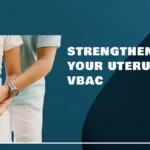
Membranes stripping is a medical procedure performed by healthcare professionals, typically obstetricians or midwives, to induce labor in pregnant women who have reached full term. It is a non-invasive method that involves manually separating the amniotic sac from the uterine wall, stimulating the release of hormones that can initiate the onset of labor. In this article, we will explore the purpose, procedure, potential benefits, risks, and considerations associated with stripping membranes.
What is the Purpose of Membrane Stripping?
The purpose of stripping membranes, also known as membrane sweeping, is to help induce labor in pregnant individuals who are close to or past their due date.
What is the Procedure of doing Membrane Stripping?
Here are the steps involved in the procedure:
- Preparation: There is no specific preparation required for membrane stripping. The procedure can be done in a healthcare provider’s office.
- Positioning: The individual will lie on an exam table, similar to a regular checkup.
- Insertion: The healthcare provider will insert a gloved finger through the cervix and sweep between the thin membranes of the amniotic sac. This separates the amniotic membranes from the uterus and stimulates the release of prostaglandins, which can help initiate labor.
- Duration: The entire procedure typically takes a few minutes.
- Post-procedure: After the procedure, the individual may experience some discomfort, cramping, or light bleeding. It is important to follow up with a healthcare provider if there is heavy bleeding or severe pain.
What is the Best Position for Membrane Sweep?
There is no one answer to the best position for a membrane sweep. However, most healthcare providers will perform the procedure while you are lying on your back with your feet in stirrups, similar to a pelvic exam. Some women may find this position uncomfortable, so it’s important to communicate with your healthcare provider about any concerns you may have. Additionally, some women may prefer to be in a more upright position, such as sitting on a birthing ball or leaning forward on a bed, which can help to open up the pelvis and make the procedure more comfortable. Ultimately, the best position for a membrane sweep will depend on your individual preferences and the recommendations of your healthcare provider.
What Does a Membrane Sweep Feel Like?
Here is an overview of what a membrane sweep may feel like:
- Discomfort: Many women find the procedure uncomfortable or even painful. It involves the healthcare provider inserting their finger through the cervix and sweeping between the thin membranes of the amniotic sac. Some discomfort or cramping may be felt during the procedure.
- Cramping: It is common to experience cramping during and after the procedure. These cramps may be similar to menstrual cramps.
- Contractions: Some individuals may experience contractions within a few hours after the membrane sweep. These contractions may feel like regular labor contractions.
- Spotting: Light bleeding or spotting may occur after the procedure. This is typically minimal and may last for up to 3 days.
- Discomfort during the procedure: The sweeping motion of the provider’s finger can cause discomfort. It is important to communicate any discomfort or pain to the healthcare provider during the procedure.
How Long after Membrane Stripping is Labor?
For most women, labor starts within 24 to 48 hours after a membrane sweep. However, there is no guarantee that membrane stripping will lead to labor or contractions.
What are Signs of a Successful Membrane Sweep?
Here are some signs that membrane stripping has successfully induced labor:
- Cramping with mild discomfort
- Contractions
- Light bleeding or spotting
- Loss of the mucus plug
- Bloody show
- Water breaking
It’s important to note that these symptoms may not necessarily indicate that labor has started, and some women may experience these symptoms without going into labor.
What to do after a Membrane Sweep to bring on Labor?
After a membrane sweep, there are several things you can do to help bring on labor:
- Stay active: Walking, bouncing on a birthing ball, or doing other light exercise can help to encourage contractions and get labor started.
- Have sex: Sexual activity can help to stimulate the cervix and release hormones that promote labor.
- Use natural remedies: Some women may find that natural remedies, such as drinking red raspberry leaf tea or taking homeopathic remedies like cimicifuga and caulophyllum, can help to bring on labor.
- Relax: Stress and anxiety can inhibit labor, so it’s important to take time to relax and rest.
- Stay hydrated: Drinking plenty of water can help to keep you hydrated and support healthy labor.
Is it possible to have Stripping Membrane at 3 cm Dilated?
It is possible to have a membrane sweep when you are 3 cm dilated. A membrane sweep is typically performed once your cervix has begun to dilate and can’t be done if your cervix is still closed.
Is it possible to have Membrane Stripping at 38 Weeks?
Membrane stripping is usually performed during the final few weeks of pregnancy, usually between 38 and 41 weeks of gestation (you are full term and your cervix is already somewhat dialated). Researchers have found that women who have a membrane sweep aren’t more likely to experience complications than those who don’t have one.
How is the difference between Contractions induced by Membrane Stripping and False Labor?
It can be difficult to tell the difference between contractions induced by membrane stripping and false labor. Here are some factors to consider:
False Labor Contractions
- Are irregular and do not occur at regular intervals.
- Do not get closer together and may stop after an hour or so.
- Are not often felt in the back.
- Stop when you change positions or move around.
- Do not get more painful over time.
- Do not cause the cervix to change.
True Labor Contractions
- Occur at regular intervals and last 30 to 60 seconds.
- Get closer together and more painful over time.
- May be felt in the lower back and lower abdomen.
- Continue or increase with walking.
- Help the cervix to soften, thin, and open for delivery.
Contractions induced by Membrane Stripping
- Can be uncomfortable and painful.
- May be irregular at first but become more regular over time.
- May be accompanied by light bleeding or spotting.
- May be accompanied by cramping.
What are Potential Benefits of Membrane Stripping?
The potential benefits of membrane stripping, also known as membrane sweeping, include:
- Inducing labor naturally: Membrane sweeping stimulates the production of hormones and prostaglandins, which can help initiate labor. This can be beneficial for individuals who are close to or past their due date and want to avoid medical induction.
- Reducing the need for medical induction: Research suggests that membrane sweeping may improve the chances of spontaneous labor and reduce the risk of formal medical induction in the hospital. This can be advantageous for individuals who prefer to have a more natural labor process.
- Avoiding medication or pharmaceuticals: Membrane stripping is a method of labor induction that does not involve the use of medications or pharmaceuticals. For individuals who prefer a more non-interventional approach, membrane sweeping can be a suitable option.
What are Risks and Considerations of Membrane Stripping?
When considering membrane stripping, it is important to be aware of the risks and considerations involved. Here are the key points to consider:
- Discomfort: Membrane stripping can cause discomfort during the procedure. However, the discomfort is usually temporary.
- Bleeding: It is normal to experience some light bleeding after a membrane sweep. If the bleeding becomes heavy or you have severe pain, it is important to contact your healthcare provider.
- Contractions and Cramping: Some individuals may experience contractions, cramping, or mild discomfort after a membrane sweep. These symptoms are typically temporary and should subside.
- Rupture of Membranes: There is a small chance that the membranes may rupture during the procedure. However, this is considered normal and is not a cause for concern if the individual is full-term.
- Effectiveness: Membrane stripping may not always be effective in inducing labor. Its effectiveness is still a topic of debate among experts. It is important to discuss the potential outcomes with your healthcare provider.
- Suitability: Membrane stripping may not be suitable for everyone. Individuals with a history of cesarean delivery, multiple births, a history of preterm delivery, or a current bacterial cervical infection may not be candidates for membrane stripping.
- Timing: Membrane stripping is typically performed when the individual is at least 39 weeks pregnant or past their due date. It is important to follow the recommendations of your healthcare provider regarding the appropriate timing for the procedure.
- Choice: It is ultimately the individual’s choice whether or not to have a membrane sweep. If the individual decides not to have the procedure, alternative options and further review may be discussed with the healthcare provider.
Who Can Benefit from Membrane Stripping?
Here are the potential beneficiaries of membrane stripping:
- Pregnant individuals with a “favorable cervix”: Membrane sweeps may be more effective if the cervix has softened, thinned, and dilated.
- Pregnant individuals who are over 40 weeks pregnant or just past their due date: Membrane sweeping may be recommended for those who have reached or surpassed their due date.
- Pregnant individuals in the early stages of labor: Membrane stripping can be performed once the cervix has begun to dilate.
How effective is Membrane Stripping in Inducing Labor?
The effectiveness of membrane stripping varies among individuals, and it may not always lead to labor induction. Here are the key findings:
- One study found that membrane sweeping could increase the likelihood of spontaneous labor within 24 to 48 hours.
- Another study found that membrane sweeping had a success rate of 86.4% in achieving vaginal delivery.
- A review of 40 studies involving 6,548 women found that membrane stripping can increase the likelihood of spontaneous labor by more than 20%.
- Membrane sweeping appears to be effective in promoting labor, but current evidence suggests that it did not, overall, lead to unassisted vaginal births.
- Membrane sweeping may reduce the need for formal induction of labor.
- Women who undergo membrane sweeping generally report feeling positive about the procedure, although it may be uncomfortable.
Is Membrane Stripping more effective than other types of Labor Induction?
The effectiveness of membrane stripping in inducing labor is still a topic of debate among experts. Here are the key findings:
- Membrane stripping appears to be effective in promoting labor. One study found that it could increase the likelihood of spontaneous labor within 48 hours. Another study reported a success rate of 86.4% in achieving vaginal delivery.
- However, the evidence for the effectiveness of membrane stripping in achieving a spontaneous onset of labor is of low certainty.
- Membrane stripping may be less effective compared to other types of labor induction methods, such as using medications.
- The reduction in the use of more formal methods of induction needs to be balanced against the discomfort and other adverse effects experienced by women.
- The effectiveness of membrane stripping may vary among individuals, and it may not always lead to unassisted vaginal births.
- It is important to note that membrane stripping is generally used when there isn’t a pressing medical reason to induce labor.
Conclusion
Membranes stripping is a non-invasive procedure performed to stimulate labor naturally in full-term pregnancies. It offers an alternative to medical induction methods and can potentially initiate labor without the need for synthetic hormones or medications. However, it is essential to consider individual circumstances and discuss the risks and benefits with a healthcare provider before opting for this procedure.
Remember, every pregnancy is unique, and it is crucial to consult a qualified healthcare professional for personalized advice and guidance regarding labor induction methods.
Frequently Asked Questions (FAQs)
Does a membrane sweep hurt?
The procedure may cause discomfort or mild pain, but healthcare providers take measures to minimize it.
What are the alternatives to membrane stripping?
Alternative methods for inducing labor include medical induction with synthetic hormones or prostaglandin medications.
How long does it take for labor to start after membrane stripping?
Labor can begin within 24 to 48 hours after the procedure, although individual experiences may vary.
Can membrane stripping lead to complications?
While it is generally a safe procedure, there is a small risk of infection or rupture of the amniotic sac.
Can anyone perform membrane stripping?
Membrane stripping should only be performed by trained healthcare professionals, such as obstetricians or midwives.
Is membrane stripping the same as breaking water?
No, stripping membranes involves manually separating the amniotic sac from the uterine wall, while breaking water refers to intentionally rupturing the amniotic sac to induce labor.












